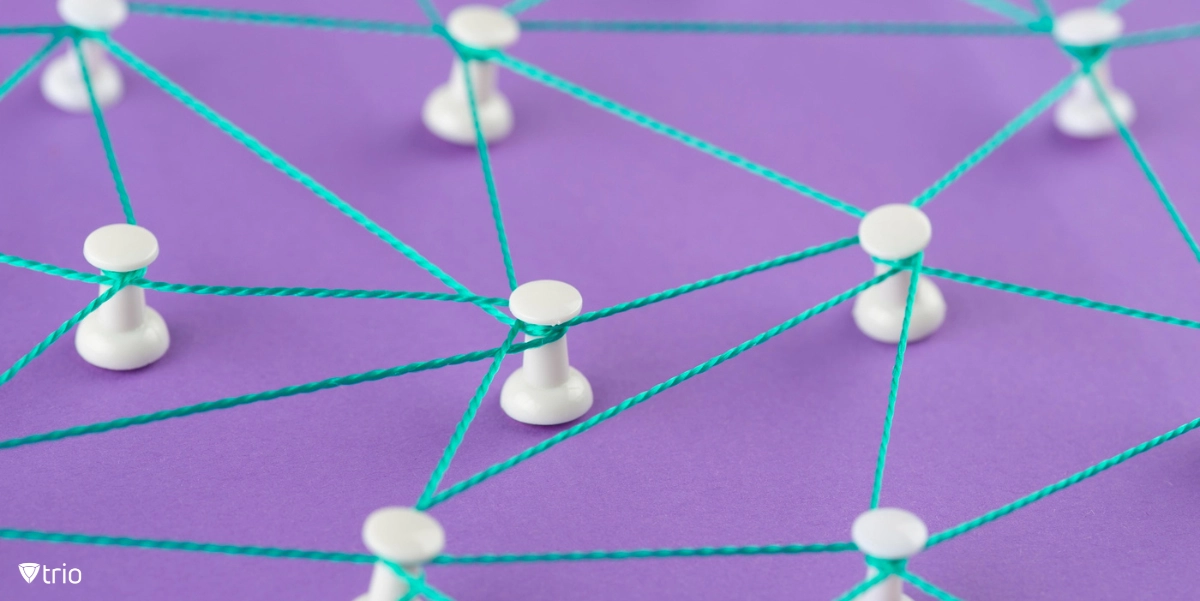Technology functions as the frontrunner of the flow in a world that is moving forward on the Fastlane. Organizations, industries, SMEs, governments, and crows are tied to technology and its offspring. They share data of any size within the IT environment, making them vulnerable to threats from bad actors. Data functions as a business asset in working spaces. So, it’s needless to say how important it is to focus on data loss prevention. Classification of data can help a company protect it from leakage. So, adopting different ways to protect the data is a number one priority for the IT administrations of businesses. Moreover, effective IT Risk Management strategies are essential for identifying, assessing, and mitigating potential risks associated with technology and data usage, ensuring the security and continuity of business operations.
But someone needs to ask: “What is data loss prevention?” The answer is short and straightforward: “Any action taken to protect data and prevent its breach is called data loss prevention. As BYOD is significant in today’s business world, it is crucial to ensure that data loss prevention systems are used correctly to seal and secure the company’s information. Data leakage could occur through employee devices. It indicates the importance of data loss prevention tools.
In this article, you will learn about the importance of Data Loss Prevention Solutions. A better understanding of the case helps protect your company’s most important asset, your data.
Understanding Data Loss Prevention in the context of IT administration
To help better protect company data, IT administrations have devised many strategies, solutions, and policies. These strategies vary based on adopted technologies, company size, and other factors. The whole point of using such methods and steps is to prevent data loss which could result in severe financial or technical damage to the company. Compliance with data protection regulations helps a business better safeguard the data. Furthermore, it is a significant win for a business to fortify the security regarding sensitive information protection.
There are different components regarding data protection:
- Content classification aims at categorizing sensitive data in a company’s digital environment. The data could include emails, documents, and databases. Analyzing the data is to determine the sensitivity.
- The creation of policies is another step taken by companies. They create, regulate, and develop rules to specify how they want their information to be used.
- UEBA (User and Entity Behavior Analytics) enables organizations to analyze and detect anomalies in employee behavior that could result in data leakage.
Data encryption is also a popular way to ensure data security, making it unreachable for bad actors inside or outside the company.

Endpoint security, including endpoint detection and response, is the most important method of data loss prevention. By monitoring and managing a company’s endpoint (emails, phones, mobile devices, USB connections, HDDs, etc.), companies can protect their data and prevent data leakage to a great extent. Endpoint detection and response solutions offer real-time monitoring and response capabilities to detect and mitigate threats on endpoints. A company’s IT policy usually regulates data access control. How companies and their workforce can access the data will primarily affect its security level. Integration of Data Loss Prevention (DLP) methods with existing companies’ methods could also play a crucial role in data protection. Companies usually use different IDS and SIEM platforms, and proper DLP tools must easily integrate with the existing platforms.
Types and consequences of data loss in mobile devices
There are so many different ways that data loss can happen within the company. Below are the most common types of data loss in digital environments:
- Accidental deletion of data: Employees might slip and tap on the delete button and delete some data from their systems. This is common, and many people may have had similar experiences.
- Hardware and software failure: As the devices age, the chances of software or hardware failure increase. If they fail, there is a high chance of losing the data stored on the device. Technical and physical issues could also result in information loss.
- Operating system updates or resets: As new updates are released for software or products, some or all previously stored data might disappear and go missing. So, it’s better to have backups of different pieces of data.
- Security breaches or malware attacks: As one of the most common incidents resulting in data loss, malware attacks or other security incidents might remove or steal the data, removing parts or all of it.
- Lost or stolen devices: If the device is stolen, it might be formatted or damaged. So, there is a high possibility of losing the data stored on the device. If the device is stolen, it might be formatted or damaged. So, there is a high possibility of losing the data stored on the device. (Implementing a proactive device inventory management system can significantly reduce the risks associated with lost or stolen devices by enabling quick location tracking and remote data management, ensuring sensitive information is secured or wiped when necessary.)
- Syncing errors: Some or all data could go missing if the process isn’t done correctly.
- Insufficient storage: As the storage fills up with different data sets, there might need to be more space for newly added information. The additional part might need to be recovered.
- Bad actors and intentional removal of the data: Angry employees who are not satisfied with their company or managers might end up thinking about revenge. One form might be removing or stealing the company’s sensitive data for criminal purposes.
There are mild to severe consequences to the above reasons for data loss. Any form of data loss could make contacts, photos, documents, texts, and other sets of data disappear partially or entirely. It could also ruin or corrupt the file to make it inaccessible. Usually, restoring this kind of loss is almost impossible or very costly. It can end up with bad actors trying to threaten the company to receive vast amounts of ransom. 52% of companies in 2022 experienced a form of data breach that resulted in significant data and financial damage, making them pay enormous amounts of ransom.
Common challenges faced by IT administrators in preventing data loss could include many factors. Working in a complex IT environment makes it challenging for IT administrators to provide sufficient security policies. Every day, new and complex threats emerge that are difficult to anticipate and prevent. Unpredictable behavior by employees could always undermine DLP efforts. There is always a challenge for companies to create a balance between productivity and security. Sometimes, getting the best results can be quite a task and may require much hard work. Encryptions can be complex sometimes, requiring time, expertise, and expenses to encrypt all the data in a company. False positives detected by DLP systems could also make the real threats go missing, a dangerous flaw for a company. Data classification is time-consuming and costly, which could be another prominent challenge for a company.
Data Loss Prevention Strategies for Mobile Devices
The question that might pop up in your mind is conducting Data leak prevention strategies for all the mobile devices in your company. A few policies could include the following:
- BYOD guidelines
- Device registration
- Access control
- Remote wiping of the information
- App approval
- Network Security
- Data backup
- Data classification
- Offline access
- Reporting system
- Regular audits
- Employee training
- Compliance Certifications.

In addition to adhering to the policies mentioned earlier, there are other ways to improve the overall security of our company. One of them is password and authentication policies which include regular password modifications, MFA (multifactor authentication), use of OTPs (one-time passwords), and use of biometrics as additional layers of security.
Enabling device encryption is a policy that can be done through the device setting or the company DLP tools. Secure containers can also help store the data, preventing loss or leakage. The company could do it by providing the proper MDM DLP apps.
Application and content management
Managing contents and applications on mobile phones can be done through MDM solutions to prevent data loss. There are different methods for using MDM solutions. These solutions give centralized control over the devices within the company. It can help users deploy apps from approved app markets to prevent data loss. And to add an extra layer of security, it can remotely and securely update applications as a part of the DLP program.
Managing app permissions and access could also be a challenge. MDM solutions functioning as DLP can control the access level of applications so that they won’t get sensitive data on the devices. Unnecessary access could also be revoked or removed.
Implementing app allow-listing and block-listing helps block malicious apps and approve the right apps for installation. This can improve data security levels to many extents.
Controlling Data Sharing and Copying or Paste can help secure the device in unsafe environments. Data loss prevention software can create and manage these policies for a company. Companies must hire the necessary DLP program to safeguard their data.
Remote wipe and selective wipe capabilities
As a data loss prevention system, an MDM solution can help protect the data by enabling remote and selective wipes. If cloud data loss prevention is deployed on mobile devices, it can run smoothly and efficiently. This is especially helpful if the device containing the information is unavailable. The MDM tool can erase parts or entire data on the device. It can also keep a data backup before wiping, protecting the user’s privacy and valuable assets. This requires the implementation of regular data backups and testing data restoration procedures periodically.
Centralized device management and monitoring
With the help of an MDM solution, you can effortlessly manage all your devices from a single dashboard. The dashboard of such solutions could also check device health and battery status and provide simplified and safe updates and patches.
Granular Policy Enforcement and Configuration enables companies to set groups of employees and devices. After creating pools and sets of users or devices, the MDM solution can apply rules to each, which can help save time and money. The presence of real-time ad reports is a criterion that needs to be considered. They help IT administrators observe, analyze, and react to all incidents regarding Data loss.
However, it is essential to mention that DLP programs can restrict the rate of data sharing between applications and users. This could be tricky for an enterprise since there is a lot of information to exchange between different parties inside or outside the office.
Data Protection Regulations for Mobile Devices
Different certifications show compliance with regulations. Every MDM solution should be certified with these certifications to showcase its liability. Some of the notable certifications include:
- GDPR (General Data Protection)
- HIPPA (Health Insurance Portability and Accountability Act)
- CCPA (California Consumer Privacy Act)
Note that the latter is for Californians.
MDM solutions provide compliance by tracking the device usage, audits, encrypting data, and remote wipe features. Compliance benefits for the MDM solutions include meeting the certifications’ requirements.
Data Loss Prevention Best Practices
There are sets of best practices for DLP with MDM solutions. These best practices must be tailored to the organization’s needs and policies to become practical. Some of these data loss prevention best practices could be using mobile device usage policies, regular updates and patching, employee training and awareness, and incident monitoring and analysis.
Is there any MDM solution to provide DLP options?
Many companies, solutions, and websites provide DLP facilities for companies and enterprises. As the number and size of the companies rise, threats and dangers for company data increase. So, there is no choice but to adopt the latest trends in cybersecurity to prevent data breaches.
Companies need to use the right MDM solution to prevent data loss.
Taking different operating systems and platforms such as Windows, iOS, MacOS, Android devices, and… into consideration has made protecting the data in these stages even more important.
Conclusion
In a world driven by technology, there are always chances of data loss. Data is the most expensive asset to a company. The company needs to prevent data loss at any cost. IT administrators play the first role in data protection. So, it’s practical and beneficial for them to choose an MDM solution for the company that helps them control, monitor, and protect the data on mobile devices. It is suggested to implement methods of DLP by using robust data loss prevention strategies. MDM solutions are created to practice these strategies, and they seem to be the latest choice for every company globally.
Trio is the latest innovation by SternX Technology, mainly focusing on DLP solution and their importance in mobile device management. This innovation is anticipated to be a unique way to protect business data.








